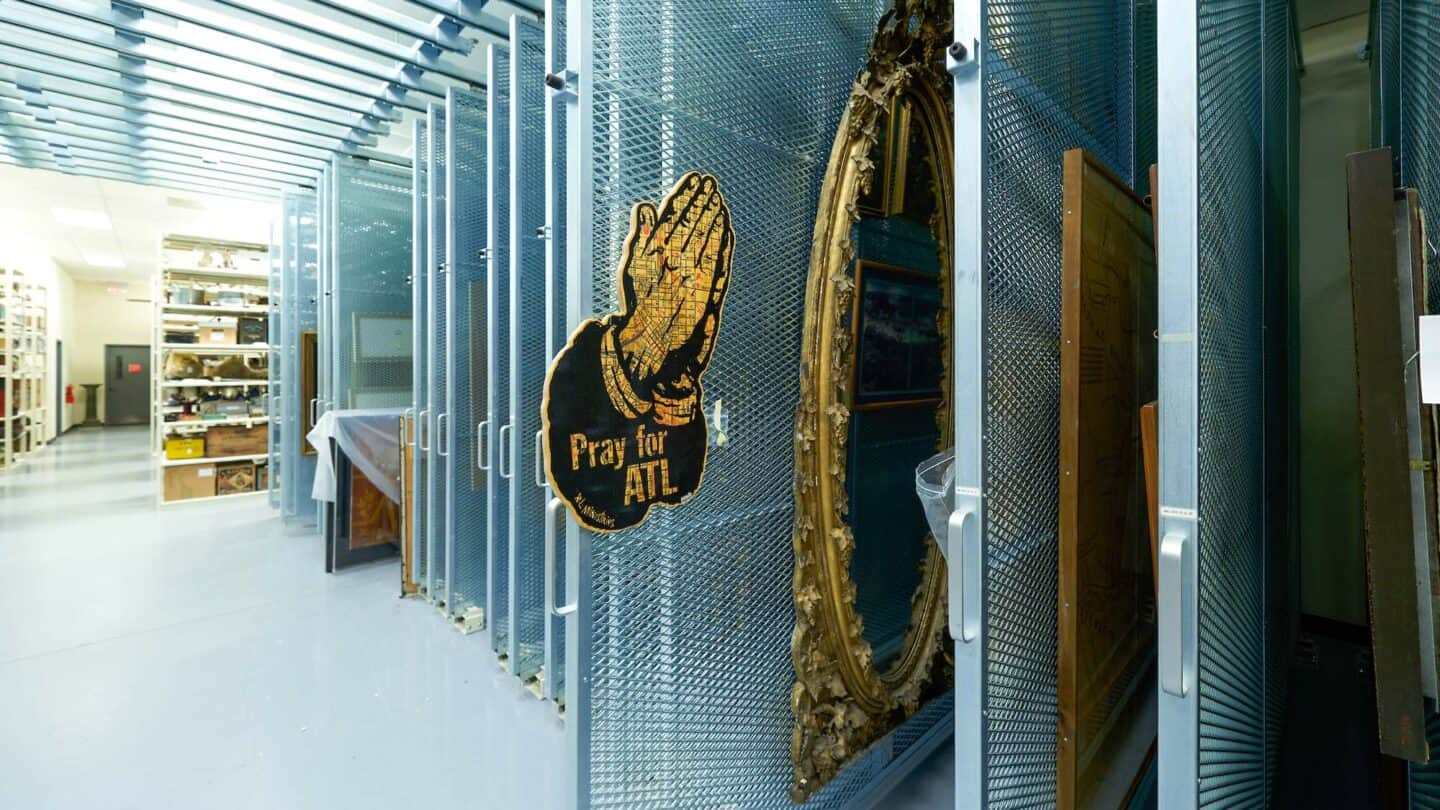
Atlanta History Center’s collection features 55,000 museum artifacts, over 17,000 linear feet of archival and library collections, and 33 acres of living collections (150 families; 493 genera; 1,129 species; 1,706 taxa; 5,206 accessions). The History Center maintains historic buildings as collection artifacts, including accompanying farm outbuildings.
The Atlanta area, encompassing the city of Atlanta and its contiguous municipalities and suburbs, is a geographic focus of the collections. The History Center also possesses publications, archival materials, and artifacts related to Georgia, the Southeast, and United States history. For Living collections: state-wide for native plant collections as well as plant collections from other regions that have influenced Atlanta’s landscape.
Learn more about our collections by exploring the collecting areas below. Be sure to check out our behind-the-scenes collections tour to venture into our holdings and even touch some of the artifacts—with gloves of course.
For more information about Kenan Research Center or our museum collections, please email collections@atlantahistorycenter.com.
Collecting. Areas.
Documentation of the Civil Rights Movement in the 1960s and 1970s, and lesbian and gay rights movement of the 1970s through the 1990s highlight the Atlanta History Center’s activism and social change collections.
Business and Commerce collections document the activities of individual businesses, local products, agriculture, and the efforts of business leaders and individual entrepreneurs to promote economic development in Atlanta.
Collections related to Community document activities of groups with common interests such as neighborhood associations, high schools, social clubs, garden clubs, churches, genealogical societies, and organizations representing the gay and lesbian community.
Collections relating to Folklife document traditions in rural Georgia and in rural areas of the Southeast. Handmade pottery, baskets are well represented in collections, as are quilts and furniture produced in Georgia. The History Center has a very strong collection of oral history recordings of Appalachian residents on topics that include crafts, storytelling, and local traditions.
The History Center possesses rich collections of textiles, decorative arts, buildings and living collections. The collections are strong in genealogical documentation and publications that focus on lineage organizations, family papers, recipe books, and oral history.
Military collections are primarily related to the American Civil War. Defined nationally in scope, the collection encompasses U.S. and Confederate experiences in all theaters of conflict with special emphasis on Atlanta, Georgia, and the Western Theater. Secondarily, the collection documents 20th-century military conflicts on foreign soil. Local in scope, the collection focuses on the military or military-related civilian experience of Georgians.
Natural and Built Environment collections document architecture and the urban landscape of the City of Atlanta; landscape design; history of Georgia and the Southeastern United States; and living collections encompassed by Goizueta Gardens.
Politics and Government collections document the activities and decisions of Atlanta-area governments and non-governmental organizations. The collections document political events, such as campaigns, rallies, and protests, as well as materials that record individuals and groups engaged in civic affairs.
Sports, Arts, and Recreation collections document sporting events and sports teams in the Atlanta-Athens area, as well as arts institutions and arts-related events in Atlanta.
Transportation collections document Atlanta’s growth and the development of railroads, trolleys, automobiles, highways, airports, MARTA, and other aspects of transportation, and conveyance of goods and people.

